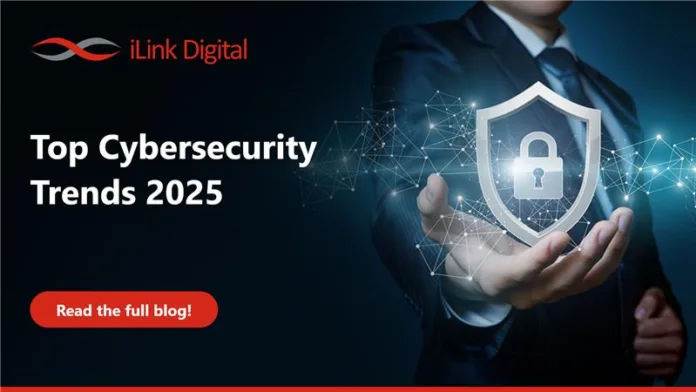In today’s hyper-connected digital landscape, cyber threats are growing more sophisticated than ever. With 2025 fast approaching, Cybersecurity Trends 2025 are shaping up to redefine how businesses, governments, and individuals defend themselves against increasingly complex cyberattacks.
From artificial intelligence-based threats to zero-trust architectures and biometric authentication, the future of cybersecurity will be proactive, predictive, and deeply integrated into our daily operations. This article explores the most critical cybersecurity trends for 2025 and how to prepare for what lies ahead.
🔐 1. Rise of AI-Powered Cyberattacks
Artificial intelligence (AI) isn’t just a tool for good; it’s now a weapon in the hands of cybercriminals. In 2025, expect a surge in AI-generated phishing emails, automated attack bots, and malware that learns and adapts in real time.
On the flip side, cybersecurity vendors are deploying AI-driven defence systems that detect anomalies and respond faster than traditional firewalls. Staying ahead means investing in intelligent threat detection tools that evolve with the threat landscape.
🔍 2. Zero Trust Architecture Goes Mainstream
One of the cornerstone Cybersecurity Trends 2025 is the shift to zero-trust models. The principle? “Never trust, always verify.” Instead of relying on perimeter-based security, organisations are moving towards verifying every user and device before granting access.
In practice, this means continuous authentication, micro-segmentation of networks, and tighter control over who can access what, when, and how. Companies adopting zero trust frameworks will find themselves better protected from insider threats and lateral movement attacks.
🧬 3. Biometric Authentication Becomes the Norm
Passwords are slowly becoming a thing of the past. In 2025, biometric authentication — fingerprints, facial recognition, iris scans — will be commonplace across smartphones, enterprise systems, and even banking platforms.
Not only is this more convenient for users, but it’s also far more secure than traditional credentials. Biometrics reduce the risk of password reuse, phishing, and brute-force attacks, making it a must-have in every organisation’s cybersecurity arsenal.
📈 4. Cloud Security Takes Centre Stage
With the global workforce becoming increasingly remote and cloud-native applications becoming the standard, cloud security will dominate IT strategies in 2025. Misconfigured cloud environments remain one of the top attack vectors, and that’s not changing anytime soon.
Companies will need to adopt cloud security posture management (CSPM) tools, enforce multi-factor authentication, and run regular compliance audits to prevent data leaks and breaches in multi-cloud environments.
🤖 5. Threat Intelligence Becomes More Collaborative
Cybersecurity in 2025 is not a solo sport. Businesses, governments, and cybersecurity firms will be more willing to share threat intelligence in real-time to counteract increasingly coordinated cyberattacks.
Threat intelligence sharing platforms and consortiums will play a critical role in early threat detection and in creating unified defence mechanisms across industries.
🧠 6. Cybersecurity Skills Gap Widening
The demand for skilled cybersecurity professionals is skyrocketing, but supply isn’t keeping pace. As threats grow more advanced, businesses will struggle to find qualified talent capable of protecting critical infrastructure.
This will lead to increased investment in cybersecurity training, certification programs, and upskilling initiatives to bridge the growing talent gap.
🌐 7. IoT Security Becomes a Priority
By 2025, billions of IoT devices — from smart thermostats to connected cars — will be active across the globe. Every device is a potential entry point for cybercriminals.
Securing IoT ecosystems will require device-level encryption, firmware integrity checks, and robust endpoint detection. Regulatory bodies may also step in with mandatory security standards for IoT manufacturers.
📉 8. Ransomware-as-a-Service (RaaS) Expands
Ransomware isn’t going away — it’s evolving. In 2025, the “as-a-service” model will dominate the ransomware space, making it easier than ever for less technically skilled criminals to launch attacks.
Organisations must adopt a proactive stance by implementing real-time backup systems, employee training, and simulated ransomware drills to respond swiftly to incidents.
🛡️ 9. Regulations and Compliance Will Tighten
Governments worldwide are tightening cybersecurity regulations to protect consumer data and critical infrastructure. By 2025, compliance will not just be about avoiding fines — it will be a competitive differentiator.
From GDPR updates to the emergence of data sovereignty laws, staying compliant will require organisations to align their operations with global security and privacy mandates.
📲 Final Thoughts: Preparing for the Future
Cybersecurity Trends 2025 are not just predictions — they’re a roadmap for staying safe in an increasingly hostile digital world. Organisations that embrace AI-based defence, invest in human capital, and adopt modern security frameworks like zero trust will be far better positioned to fend off tomorrow’s threats.
Cybersecurity is no longer optional — it’s a critical business function. Being prepared today means you’re less likely to become tomorrow’s headline.
